A new hope
In January 2011, Olympus announced a new digital compact camera that threw the photography community into a little frenzy. The Olympus XZ-1 redefined a new era by incorporating an ultra-bright lens into a digital compact camera chassis and sensor. Up to now, photographers have been depending on their trusty compacts such as the Canon S95 and Panasonic LX-5, which have ruled the roost on top-end compact cameras with their bright lenses and slightly larger (compared to typical compacts). The new Olympus XZ-1 smashed the record with a 6-24mm f/1.8-2.5, which delivered ultra large maximum aperture of f/1.8 to f/2.5 with a 35mm equivalent of 28-112mm focal length!
The new Olympus seems promising on paper specs, giving photographers fast performance even with a compact camera. Olympus claims in its press release that the XZ-1 is “developed for the photographer or enthusiast who is looking for the ultimate high-quality, high-performance premium compact camera”, and that the camera is designed for fast speed and low-light performance. That sounds like a lot of promises they have to deliver on!
Specifications
Let’s start with the paper specifications. The Olympus XZ-1 has a relatively modest 10 MP sensor, which is in line with the trend of most high-end compacts today in reining in the megapixel race for better control of sensor noise. The Olympus is slightly larger than the Panasonic LX-5 and significantly more so than the Canon S95, which are its main competitors. However, it remains “pocketable” and is still much more manageable compared to the huge Canon G12 and Nikon P7000.
The most outstanding feature must be the iZuiko 6-24mm f/1.8-2.5 lens that the Olympus XZ-1 is endowed with. With a equivalent of 28-112mm focal length, the lens promises unmatched maximum aperture of f/1.8 at the wide end, and a stellar f/2.5 at the tele-end of the lens. Never before has such an impressive lens been found on a compact, which really worked the photographic community into a frenzy.
Shutter speed runs from 60 seconds to 1/2000th second, which is very good for a compact camera. The ISO range is very respectable from ISO 100 to 6400, easily the widest on any digital compact camera. The camera even comes with a built-in ND filter to help you harness the power of the bright max aperture in bright conditions.
Design and handling
For a digital compact camera, the Olympus XZ-1 handles with aplomb. It manages to fit in the pocket even with the huge lens, and the controls fall easily to hand. The body has a nice matte finish to it, but it feels a bit too smooth to offer a good grip. As compensation there is a nice patch of rubber at the back of the camera for the right thumb to grip though.
Olympus has chosen not to include a charger with the camera, so you get a USB cable that you can connect to the camera to a power adapter for charging. This makes it impossible to charge a spare battery if you’re using the camera, although you can purchase an optional battery charger.
On the upside, you can connect the camera to your computer and download the images and charge the camera at the same time, albeit at a slower charging pace. I do have some concerns whether the flap covering the USB port on the camera will be worn out over time.
The Olympus XZ-1 uses a smallish LI-50B battery with 925mAh capacity, rated for 320 shots per charge. I managed 666 images (actually 333 simultaneous recording of both RAW+L) from one charge, which is pretty close to what Olympus claims.
The camera comes with a push-on lens cap, which must be secured by the lens string to avoid accidental loss. I’d very much prefer an integrated lens cap like other compacts, or at least a spring-loaded snap-on lens cap at least. In practical use however, the lens cap on the thread is not as fiddly as I imagined, and turning on the camera pops the lens cap out automatically, which is quite convenient! There is no filter screw thread on the lens though, so the use of screw-on filters is out of the question.
There is a tiny spring-loaded built-in flash that pops up with considerable force, and while it’s small in power (guide number of 7) it is pretty capable in illuminating nearby subjects with advanced flash controls, including fill-flash in fractions. The flash can even work with dedicated flash units for wireless flash triggering! There is a hot shoe on the camera, which you can mount external flash units for more power or to bounce the light.
The Olympus XZ-1 features a dedicated video button that falls nicely under the right thumb, so you can instantly switch from shooting stills to 720p HD video at 30 fps at the touch of a button. This feature is very convenient and useful, but unfortunately not programmable for people who don’t shoot video.
And finally, Olympus stuck a F1.8 sticker on the front of the camera. I understand that this is a major selling point of the XZ-1, but it is totally unnecessary to call attention to it with a huge “look at me!” sticker. Potential customers already know of this fact, and it sticks out like a sore thumb for photographers trying to be discreet with the all-black version.
Operation
With the Olympus XZ-1, the navigation menu is easy. There is virtually no need to look at the instruction manual for most of the operation, except for more complex actions such as setting wireless flash etc. Press the power button and the camera powers up and extends the lens almost instantaneously.
Amazing sharpness and control - when the light is good. Click on images to enlarge.
Zooming of the lens is done with the ring around the shutter release button, and the control is nice and smooth for precise zooming. The mode dial is located just beside the shutter release button, which turns confidently with nice clicks (but it does rotates by accident sometimes). The modes are painted onto the dial, which makes me wonder if the paint will rub off over time (it will be a real issue if it does!).
The ring around the lens is nicely made, and the positive click stops makes it a pleasure to change the setting such as the aperture etc. I use my cameras in aperture priority mode most of the time, and the LCD displays the selected aperture in a scale format that is easy to use alongside with the lens ring selector.
In terms of focusing, the Olympus XZ-1 features the standard auto-focus, face detection, focus tracking, macro, super macro and manual focus. While the various focus modes work well, I disliked the fact that changing the focus mode is a two-step process (while many cameras do it in one step). In addition, I would love it if the camera can focus closer without me having to go into the close-up mode, which is a hassle due to the design.
Macro mode makes the car look faster than it really is. How brilliant!
One glaring design flaw of the Olympus XZ-1 is not having direct buttons for changing the ISO and Auto WB. Given that this camera is designed for serious photographers, not having ISO button is a serious drawback. We probably do not want the camera to set the ISO automatically, so we would need to change the ISO frequently to keep ISO to the lowest speed. It would be great if we can reprogram any of the buttons to let us change the ISO directly! The Auto WB works surprisingly well, but a lot of users would still love to have a WB button.
The 3” OLED monitor (610k resolution) with wide-viewing angle is bright and visible even in harsh sunlight, but can be difficult to use for certain operations such as manual focusing. You can however fit an optional Olympus VF-2 finder for easy viewing in all lighting condition, as well as achieving better critical focus.
Impressive macro performance from the Olympus XZ-1. Click on images to enlarge.
The Olympus XZ-1 comes with six Art Filters for photographic effects: Pop Art, Soft Focus, Grainy Film, Pin Hole, Diorama and Dramatic Tone. For serious photographers, these are nothing more than fancy modes that messes up the image. However, they can be quite fun to jazz up your image, and I like the fact that you can enable the effects in the RAW converter in the post-production stage if you are shooting in RAW mode.
Cool effects available, but don't get too addicted! Click on image to enlarge.
The diorama mode works well in certain images! Click on image to enlarge.
But the award of "Coolest Effect" still goes to Dramatic Tone. Click on image to enlarge.
Is the camera responsive enough?
The image below was taken with the Olympus XZ-1 to demonstrate the short shutter lag. That was one of my concerns when purchasing the camera, and I had a short time with it at the store counter before deciding that it is pretty good in terms of shutter lag. However, this is assuming that you don't encounter difficulty in autofocusing, which will definitely have negative repercussions in capturing the image.
So far, the Olympus takes slightly longer to focus in lower light, but it is still mighty quick for a compact. In good light, it's really fast in focusing and the short shutter lag means that you never really miss most subject.
Just to clarify, this shot was taken to test the shutter lag only, not the autofocus tracking! I preset the focus point to the puddle of water and held the focus there by holding down the shutter release button at half-way position, and shot it as soon as the car's front tires hit the puddle. I was at the 112mm end of the lens to keep myself furthest away from the car in case I got hit!
Short shutter lag means you can get shots like this! Click on image to enlarge.
Results
The Olympus XZ-1 is quite a joy to use, with fast shooting speed and short shutter lag. The focusing is pretty quick and snappy for a compact camera, and the zoom controls are smooth and precise. In low light conditions, focusing slows down but hunting is not prevalent with this camera.
The iZuiko lens has a strong tendency to flare though, bleeding magenta cast in the overblown areas. Such situations do not occur frequently, but when they do it is difficult to shield the lens totally from flare.
The video performance is pretty impressive though with very smooth stabilization. Autofocus works in video mode, but don’t expect the focus to be fast enough to capture fast moving subjects or quick change in subject distances.
Image quality is a mixed bag. The Olympus XZ-1 performs exceptionally well in certain conditions, but absolutely falters in others. In terms of JPEG quality, the Olympus TruePic V image processor does a nasty job of smearing details with heavy-handed noise reduction for any images shot above ISO 400. Forget about shooting above ISO 800 unless you are a huge fan of watercolour rendition of your images, or simply love Kodak TMAX 3200’s grain or noise.
Wide open shots deliver relatively shallow depth of field. Click on image to enlarge.
Generally impressive performance from Zuiko lens. Click on image to enlarge.
In good lighting and at low ISO settings however, the Olympus XZ-1 is an absolute peach with its iZuiko lens. The images are extremely crisp and sharp, showing off the impressive lens to perfection. The advantages of large aperture can be used to their maximum advantage, delivering relatively shallow depth of field that one does not typically associate with a digital compact camera. In good light, the camera tones down its ham-fisted noise reduction algorithm, and you can see the impressive resolution of the lens in fine details.
Strangely, the Olympus XZ-1 struggles with distant subjects. Regardless of lighting condition or ISO settings, finer details in distant subjects are smeared in general. It is not as if the camera is incapable of good resolution, as the macro photography can capture even minute details with impressive performance. The combination of aggressive noise reduction and high amount of sharpening (presumably to bring back details lost in the noise reduction) can introduce a very “digital” feel to some of the images (not in the good sense!).
Distant details suffer from aggressive noise reduction even at ISO 100.
Click to enlarge cropped section.
Depending on the image it is possible to tone down the smearing of details and noise reduction. Let me say that a lot of these issues become magnified in pixel peeping, and you probably will not see the effects when viewing the full image.
Strangely, the camera give hints of when the image is going to turn out slightly fuzzy with the noise reduction, even at ISO 100. When the light level falls, you can see some tiny "buzzing" rendition on the LCD screen when composing the image, which lets me know that noise-reduction is kicking in. It's weird, but so far it holds true for me - the images that I reviewed on the computer in post processing did look softer for the images with the "buzzing previews".
You can shoot in RAW mode to by-pass the aggressive noise reduction, but the problem of noise rears its ugly head once you turn off the processing. The bright Zuiko lens can’t help conceal the fact that the sensor is ultimately restricted by its small size compared to M4/3 sensors. The Olympus RAW software converter works pretty well and quickly, even though initially I was plagued with very slow responses when I was multi-tasking on my Macbook Pro.
Is the quality really that bad? No it isn't!
The Olympus XZ-1 is not known for being the sharpest digital compact in town, and we have seen many instances where the image has smudgy details to compensate for the sensor noise.
Worse case scenario (or even average performance) aside, what is the best that the Olympus XZ-1 can deliver when it comes to landscape details? Well... surprisingly acceptable if you are willing to coax out the image with the right settings. Here's an image I took of some branches and foliage, which is something that will trip most cameras over.
I shot the image at ISO 100 in RAW mode, in Aperture priority at f/5.6 and 1/60th sec. The RAW file was converted in the Olympus software with a +0.5 EV compensation to brighten up the details. Noise reduction was set to zero, and I dialed in +1 for sharpness in the Olympus software.
The resulting image is not something that will get the larger sensor cameras worried, but it shows that the Olympus XZ-1 can deliver reasonably good imagery with proper care and technique. Not quite the mushy leaves and branches I was dreading... phew!
Here’s the full image… Click on image to enlarge.
And here's a 100% crop from the image… Click on image to enlarge.
Not too shoddy for a compact! You can get good images with a bit of care and understanding of how the camera operates.
High ISO samples
Everyone is curious about how the Olympus XZ-1 performs at high ISO ratings, given Olympus marketing team’s enthusiastic pitch of the camera as a low-light camera. Well… I wouldn’t exactly call it a “low light camera” even though it carries a bright lens, because the aggressive noise reduction and noisy sensor really limits how much you can shoot in dim conditions.
I don’t think it is as terrible as I imagined it, and it really is quite acceptable for a compact camera with a small sensor. It’s certainly no match for the APS-C or M4/3 sensors, but you certainly can capture images that few (if any) compact cameras can, thanks to the brilliant Zuiko lens mounted on the Olympus XZ-1!
I took some images in JPG mode with default noise reduction and sharpening for you to judge the quality for yourself.
Enlarged section of image shot at ISO 1600. Click on image to enlarge.
ISO 1000 and 1600 compared. Click on image to enlarge.
ISO 100, 400, 800 and 1600 compared. Click on image to enlarge.
Conclusion
As Darth Vader will say, “The Force is with you, young Skywalker. But you’re not a Jedi yet!” In this case, I’d say that the Olympus XZ-1 carries an impressive lens, but the size and capabilities of the sensor means that it carries no threat to the bigger boys such as the Micro Four-Thirds or DSLR.
If you are looking for pure quality in a compact, you’d be better served by something with a larger sensor in a compact chassis such as the Leica X1, Fuji X100 or the Panasonic GF-2/Olympus E-P2 with pancake lens. I know they cost much more than the XZ-1, but you will be sorely disappointed if quality is your main criteria.
The Olympus hates the Dark Side. Slight blurring occurs as noise-reduction kicks in.
If you are comparing to the Panasonic LX-5 or Canon S95, the Olympus XZ-1 will be a good choice if lens specification is your key consideration. The Olympus delivers strong performance over the competitors in good light and moderate distance, but fails to shine in poorer light condition and closer to infinity. Both competitors offer credible lens performance and good max aperture as well as distinctive advantages, with the Canon S95 in a truly small chassis and the LX-5 delivering native 16:9 panoramic images. They are definitely no pushovers in this battle of digital compacts, and these three cameras cater to different crowds.Perhaps the dream of a digital camera with great quality and bright lens in a compact chassis was too ambitious for current technology, which led me to be disappointed with the Olympus XZ-1’s image quality. The camera has it nailed in virtually all aspects, but the sensor is simply a let down for me. I’m sure many photographers will enjoy using the Olympus XZ-1, but I personally find it ironic that a camera that is designed to thrive in low-light with its bright lens delivers its worst images in such conditions (no fault of the lens – it’s the terrible noise reduction processing).
If only the Olympus can deliver images like these constantly...
Great image quality in a truly compact camera? Yes, the Olympus XZ-1 is a happy camper given sufficient light, and you will be amply rewarded with sharp images with great colours. But when the light level dips and the camera is given a free rein with its over-the-top noise reduction, everything just falls apart like a house of cards. It is not a camera for everyone, and should be used with care to get the most out of its noisy sensor and high-performance lens, and definitely not for low-light photography.
Let’s be realistic – the 1/1.6" sensor is too small for truly noise free photography
The compactness lets me carry the camera everywhere, and get images where I used to miss because I did not have a camera with me. I'd say that the Olympus XZ-1 is an excellent camera in spite of its limitations, or when you compare it with other offerings in the same league (such as the S95 or LX5). It's not an easy camera to handle if you expect quality images straight out, but given time to learn its quirks, I think most users will grow to love it more.
Anyway, this is a compact camera so I get to carry it everywhere, and having noisy images is better than having no images. My review was never meant to compare the XZ-1 to a larger sensor camera, but rather to provide some actual images from the camera to curb high expectations stemming from the enthusiastic marketing from Olympus pitching the XZ-1 as a low-light camera.
If you happen to own the Olympus XZ-1, bring it everywhere whenever you leave your larger cameras at home. Cheers!
Keep yourself in the loop...
If you want to be updated on my latest reviews and photography articles, click on the following link to join my blog's Facebook page!
"Photography Happenings" Facebook page

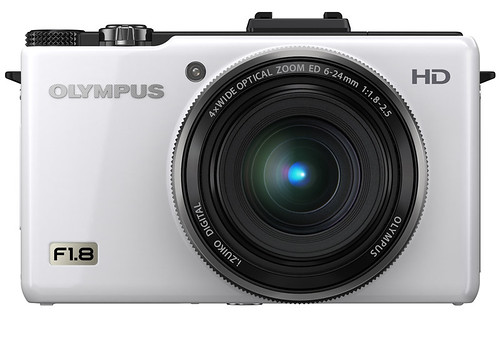
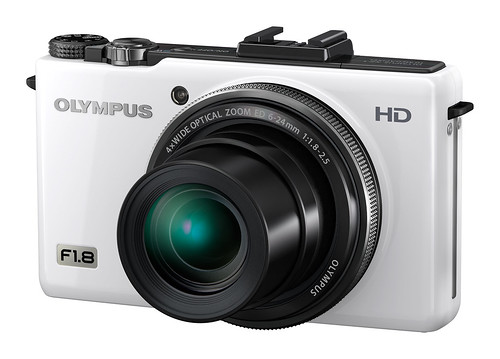
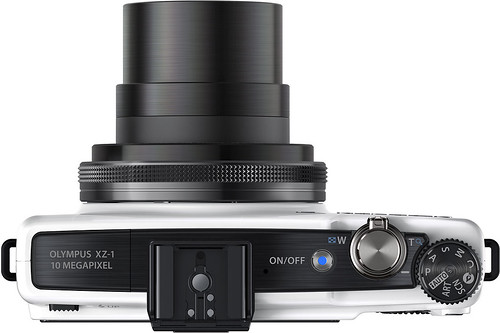
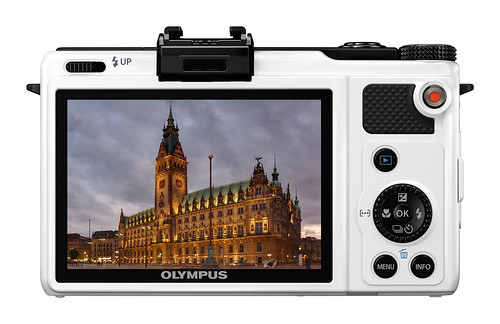
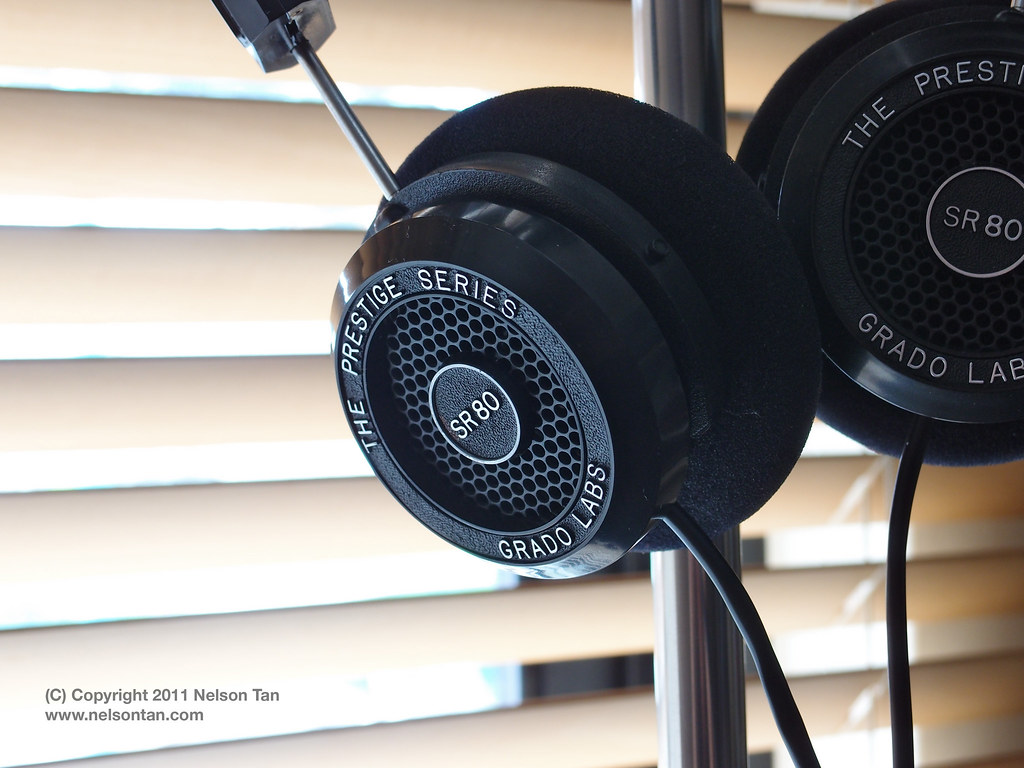

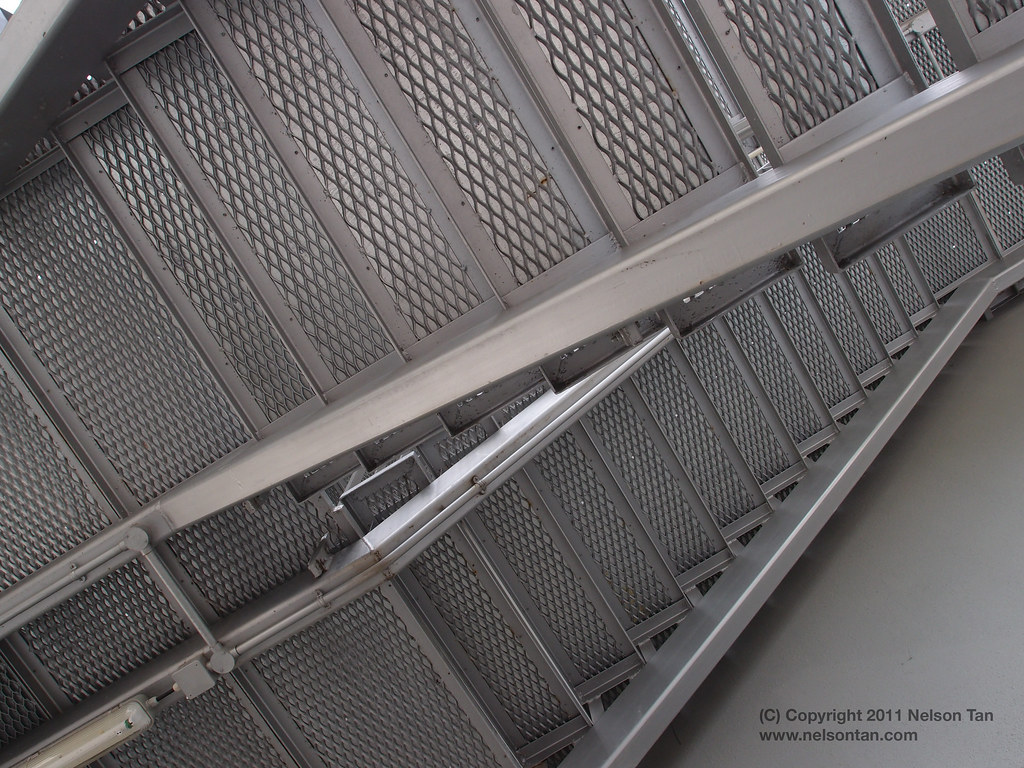
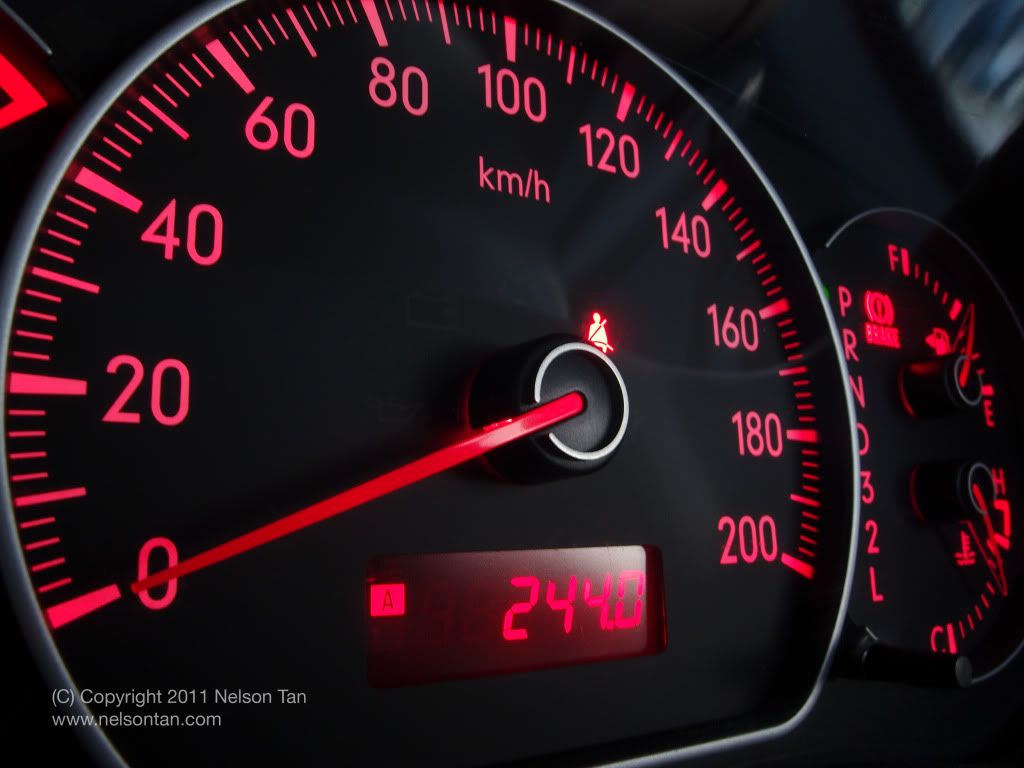



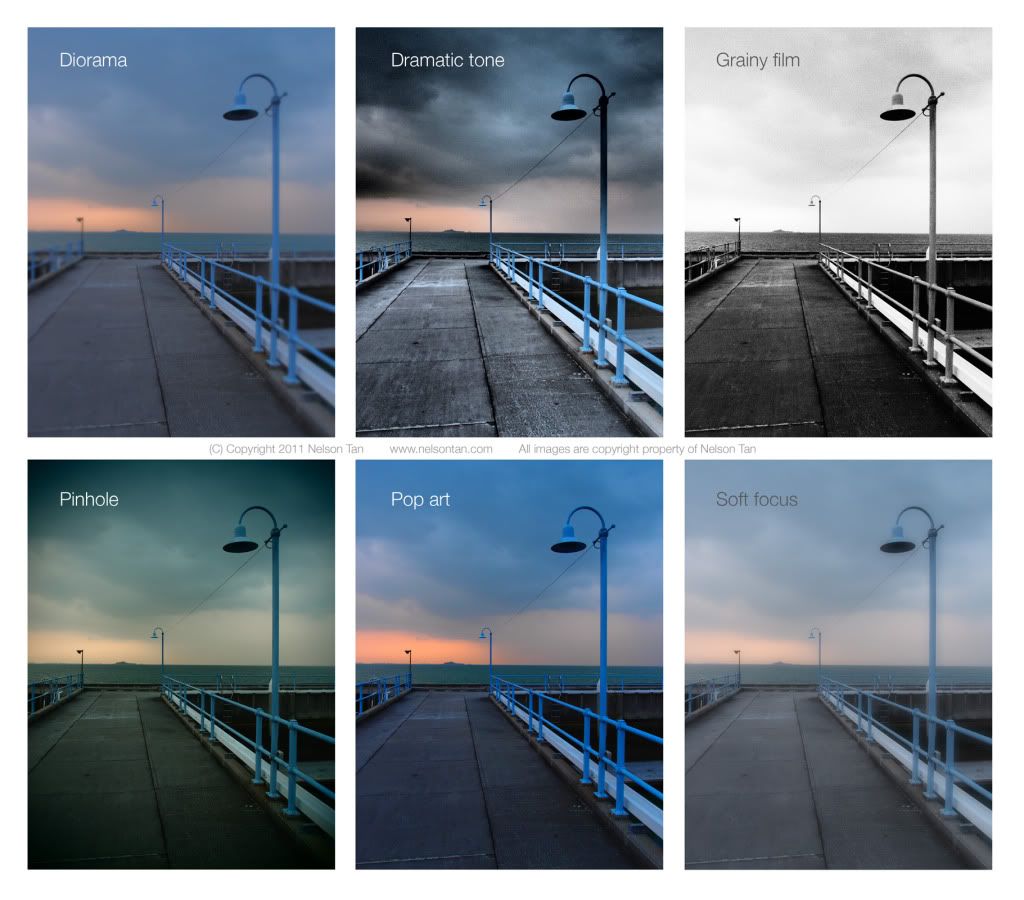
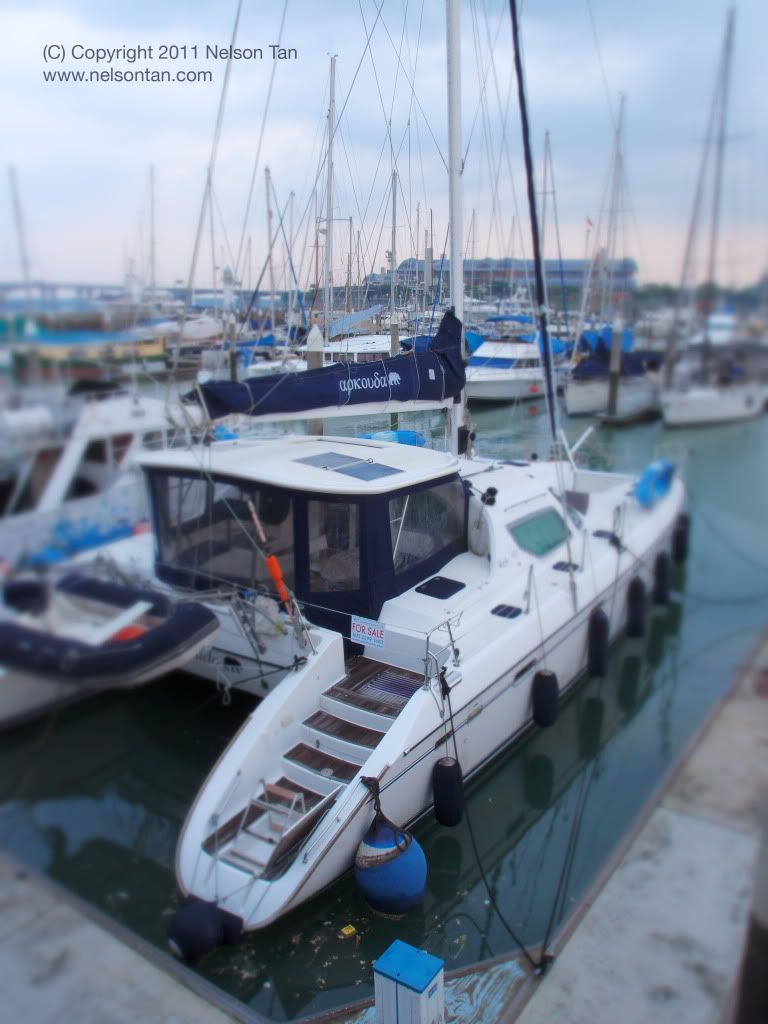

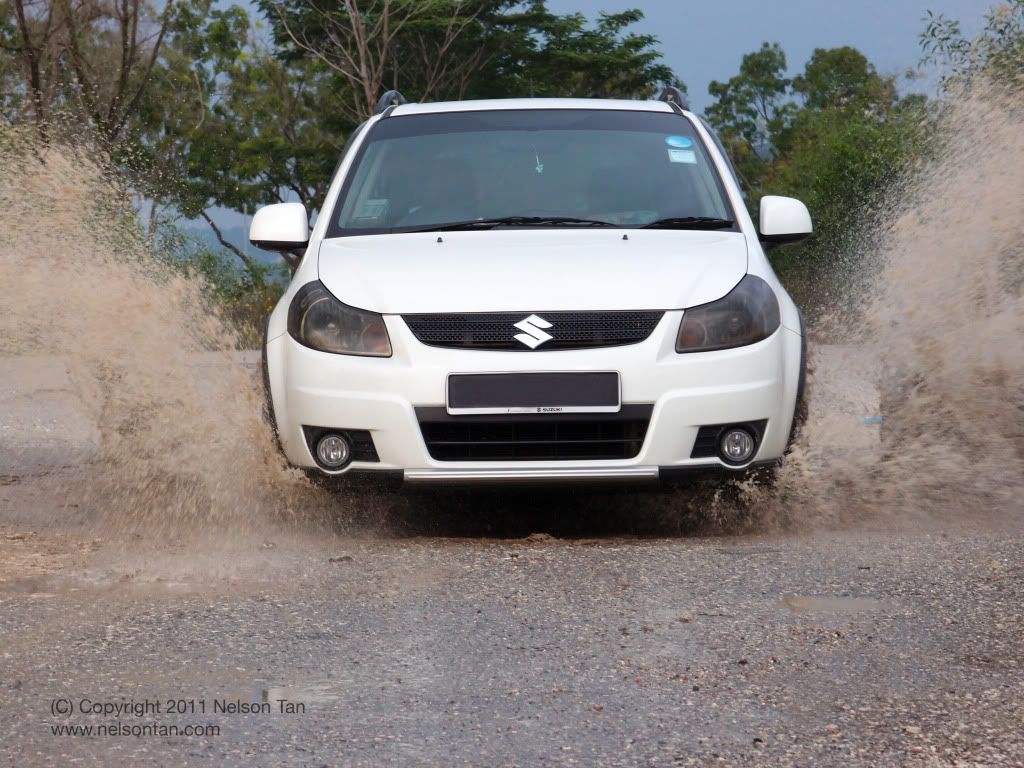


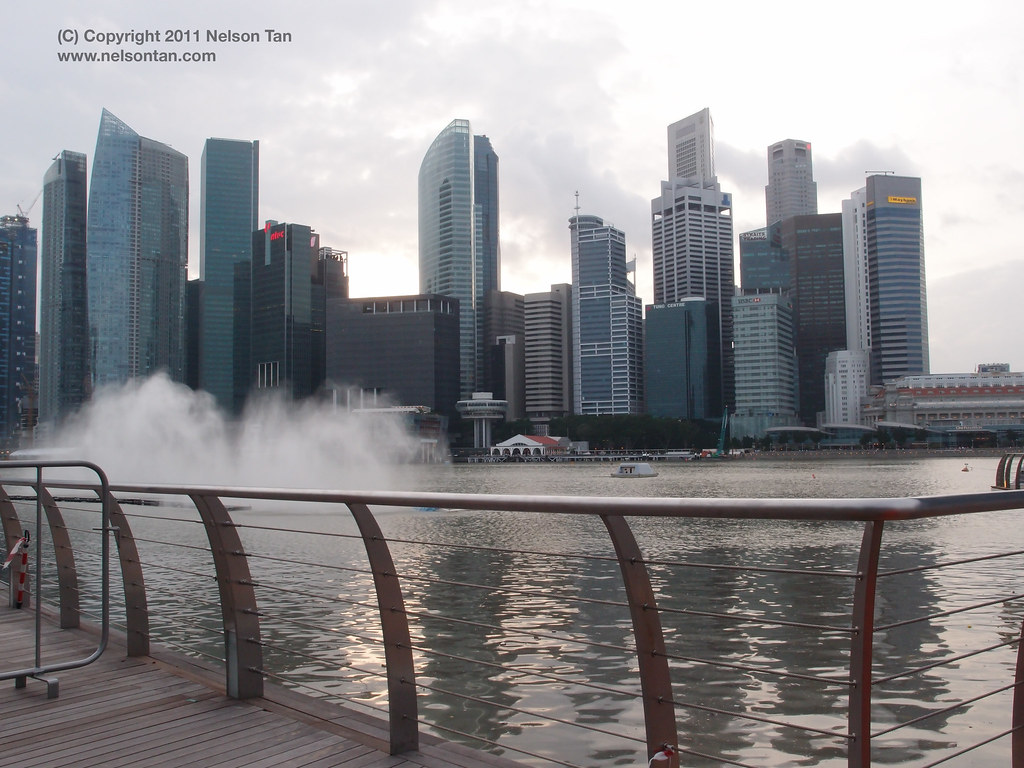

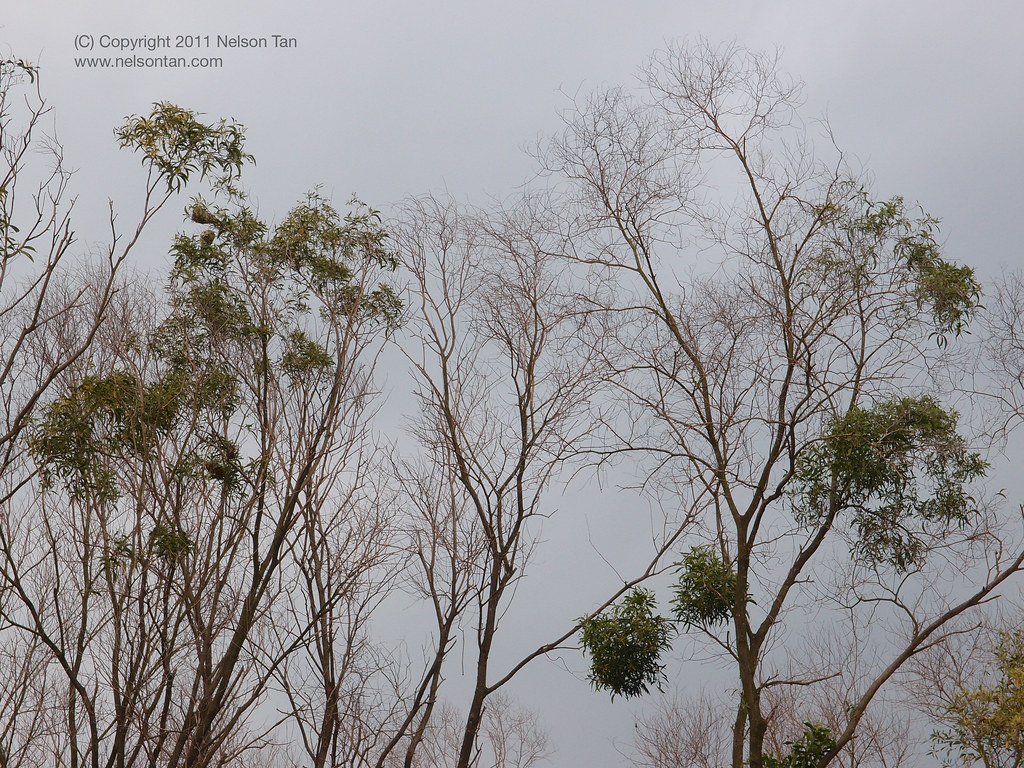


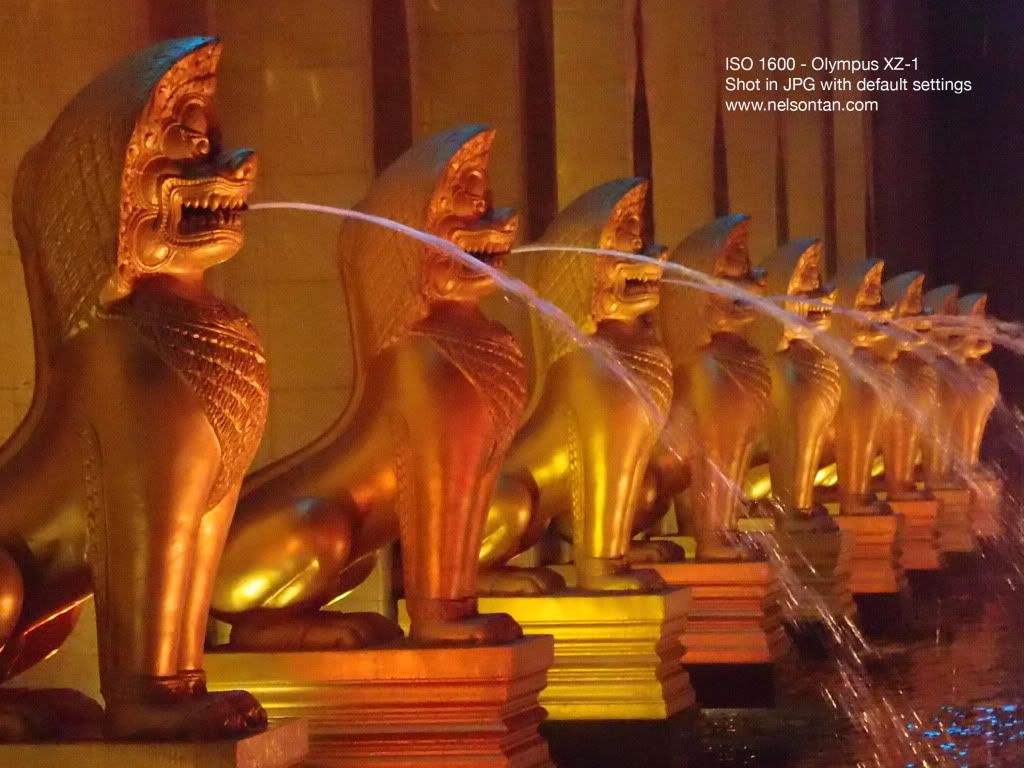

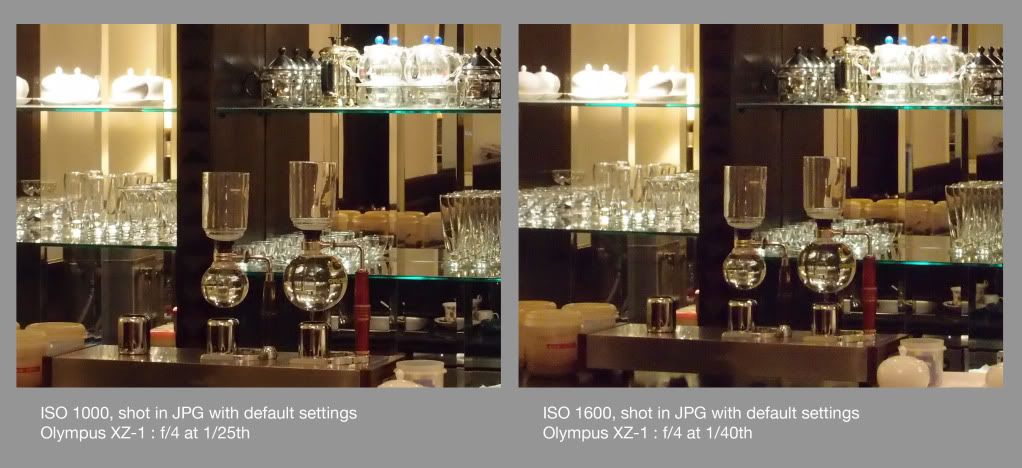



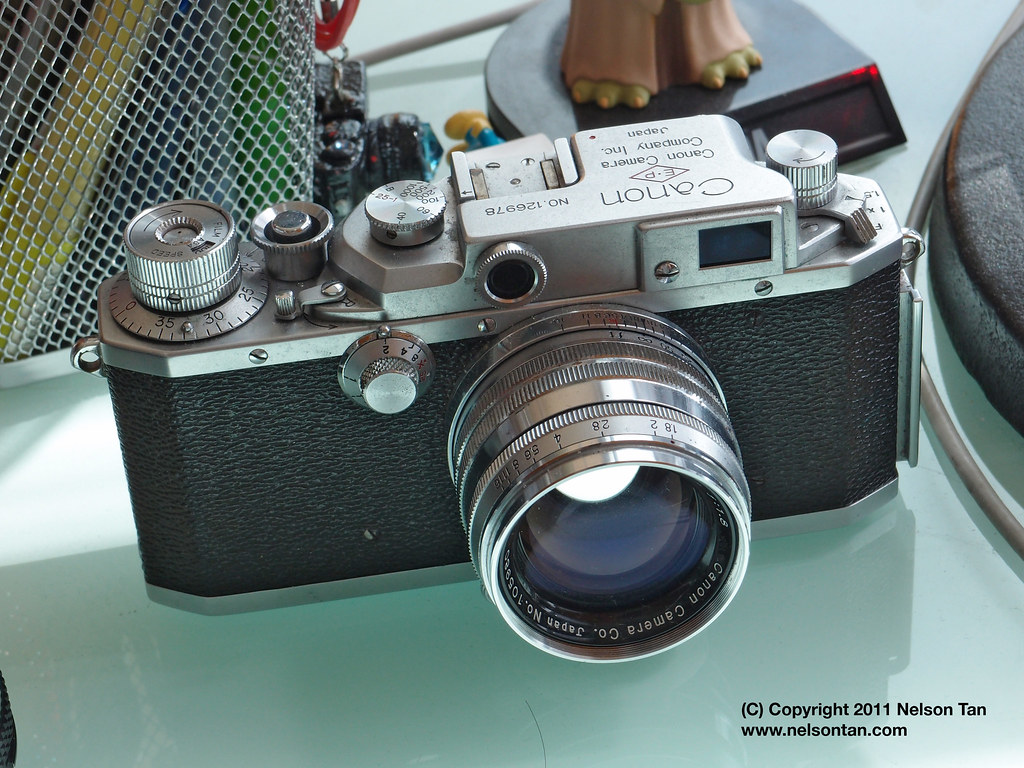
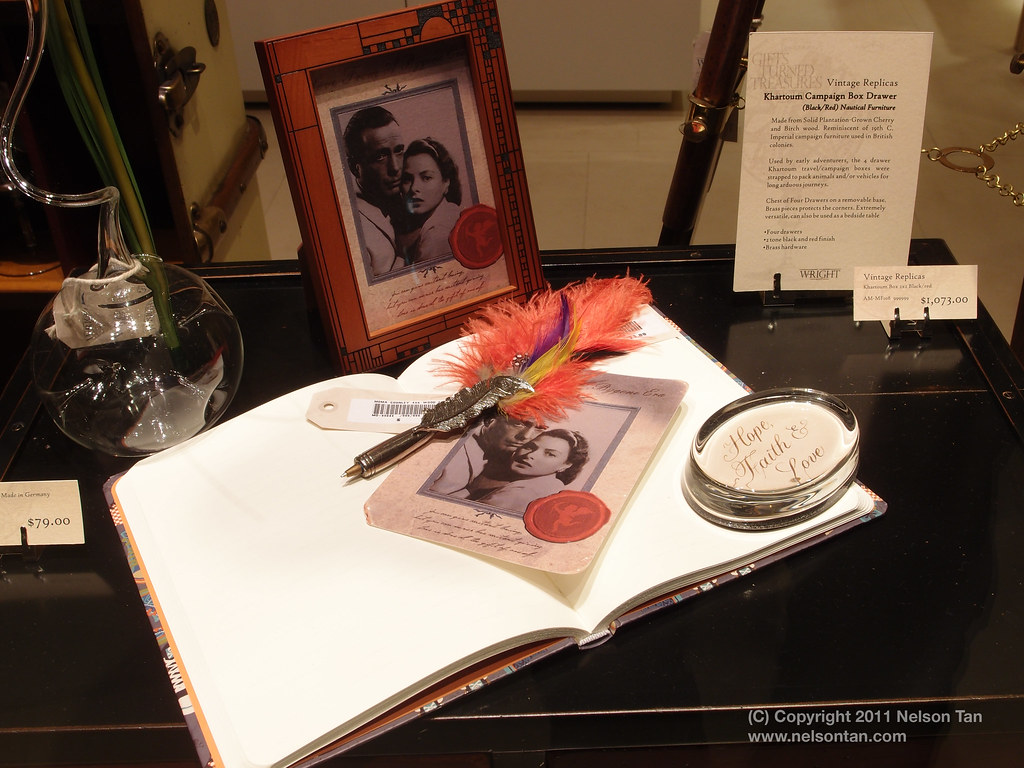
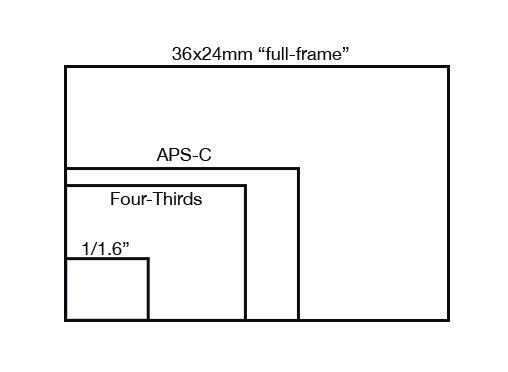
21 comments:
Hi Nelson,
I like your frank and straight-forward review of XZ-1. I've been shooting with this compact for the past 2 weeks and I agree to most of your findings and observations.
There is one other issue that I've been facing, i.e. blueish cast when shooting indoor with on board flash. Since there is no dedicated WB preset for flash I'd tried Auto and Sunny WB (nearest to 5500k). The resultant images can be disappointing...
Did you encounter this problem?
Dennis
Hi Dennis,
Glad you enjoyed the review! I'm not a huge fan of using flash, but I've tried the built-in flash (and used an external Metz flash as well). I found the WB very accurate for flash though! I just checked the WB info on the file, and it was set to Auto.
Hi Nelson.
Thanks for the review. My last camera was a point and shoot Pentax and I was very disappointed with it, though I did get a lot of good shots while travelling it was just so slow and terrible in low light conditions. So this time I am taking my time in choosing the right camera. I love taking photos and would like to learn more about photography but at the moment I don't know much at all so alot of the reviews I have been reading are very confusing. I am trying to decide between the Panasonic Lumix DMC-TZ10 and the Olympus XZ1. And I really want to get the right camera but its hard when the Olympus hasn't been released here yet and there are not many user reviews out there yet on the Olympus. Do you have any suggestions??? or opinions??
Kellie
Hi Kellie, the Olympus XZ-1 is not a perfect camera (if there was ever such a thing!). In terms of size, it's a nice companion for travel. And the focusing and shutter lag is pretty good too, so you can capture most of the subjects easily.
The Panasonic has a overwhelming advantage in the zoom range (25-300mm equivalent), so if you are always shooting from a distance, then the Panasonic is the camera to get. So far I've been testing the Olympus in the best quality scenario, so I can say that the camera delivers pretty impressive quality at low ISO and in good lighting.
Stay tuned for other higher ISO samples that I'll be shooting this week!
Excellent review! Thank you for your critical analysis.
Clearly, those who prefer to shoot JPGs have some real issues to face with this camera.
But what about RAW users. It seems the major complaint is against the in camera processing. So for the RAW user, can the image quality be considered much better, albeit requiring some work in post to address noise?
I'm considering the XL-1 or the LX5. I will use RAW only. Given that choice and RAW, which would you prefer?
Hi Don, the JPG rendering is really not that bad all the time. In good lighting, it does quite an admirable job. Given that the file size of the XZ-1 is not really that big, I'm not spending too much time converting those selected images into TIF or JPG, so I don't mind shooting RAW with the Olympus. Your mileage may vary, so if you are a heavy shooter and you process a lot of images (especially low light/high ISO images), you may not like this route much!
Nelson
I like the camera but it bugs me to have to push the up arrow to enter the exposure compensation mode and worse, while rotating the dial in the mode, the histogram disappears from the screen so you can't see the results of EC in live view.Is there a way to get a live histogram while rotating the EC dial? Thanks
Louis Bouillon NJ USA
Hi Louis,
Glad to hear that you like the camera too! There don't seem to be a way to keep the histogram in view - it disappears once you select exposure compensation, or when you lock focus (understandably so).
HI Nelson
Tks for your fantastic review and I bought this xz-1 two days ago. Overall I love this cam but there is this "focus-hunting" issue during video recording which I am very uncomfortable with. I have owned campact cams from canon and panasonic before and never encounter this issue. The videos taken were very smooth.
Is there any way to get around it?
Nelson, I LOVED your review. I bought this XZ-1 and have been going nuts because I thought either I was crazy or blind as NOBODY had been talking about the aggressive noise reduction on this camera. I had first posted a 3 star review on Amazon cause I kept finding most of my pictures looked WAY too soft..JPEG. One guy commented almost angrily the camera is tack sharp..and he did wake me up to the fact it has IN camera sharpening..that helped a bit. It wasn't till I messed with raw that I now really knew the pics were so soft EVEN many at iso 100 because of aggressive noise reduction.
You had the first review where I saw noise reduction mentioned a bunch of times THANK YOU. I still REALLY like this camera.I have an LX5 as well..but I feel even just lens distortion wise the XZ-1 really shines as best. But seems for a REALLY a point and shoot camera any time I will want a pic to keep forever I will most likely need to shoot raw and then remove the noise reduction. Sort of a pain..At least now I know I wasn't crazy re: overall soft pics OR that my xz-1 is defective as I thought it might be. One last thing..I a NOT so blown away that this camera has very accurate color ESPECIALLY skin tones. My wife happens to be Asian I am Caucasian. MOST pics so far I come out TOO red (too much magenta) She comes out too Yellow. I can't really get an accurate pic if we are both IN same picture..as either I can fix ME she gets more yellow..or fix HER I get even more red. That said I still think it's a very good camera for this category, OVERALL maybe best in class.
Great post Nelson. Excellent review. I had a chance to check this and the x100 in the shops today for a short while and wont be getting either :)
the noise issue coupled with its not too great sensor size is an issue but i guess its a compromise. i do think olympus could have done a bit better than a 1/2.33 sensor size.
thanks, raph
Thanks for the excellent review which outlines the positives and negatives of the XZ-1.
I am used to switching into Macro mode with a single button (Canon G10). So far, it seems to be a two-step process with the XZ-1. Is there a way to program or customize a button to switch directly to Macro/SuperMacro?
Hi Roger,
As far as I know, there's no direct access to the super macro mode. It's a bit annoying for me as well! :)
Hi Nelson,
Thanks for review!! I am very tempted to purchase XZ-1 but the struggles with distant subjects are a concern to me. In terms of landscape pictures (be it day or night), would you recommend XZ-1 or LX5? Of course, a DLSR will be the best but I am bit lazy to carry it around all the time.
Thanks!
Hi Shawn,
The XZ-1 struggles with distant foilage, so I'd recommend the very capable LX-5 if that is your kind of photography.
Regards,
Nelson
Wonderful review! Very helpful indeed. I am thinking of getting a new advanced point and shoot camera and I am thinking of getting one of the top rated cameras in the market today, this Olympus XZ-1 Camera. But I am still trying to look for a good models. I will definitely consider your review and I hope I won't regret my purchase! Thanks! ;)
The popping out or should I say unceremonious tossing out of the lens cap when the camera is turned on, and the troublesome replacing of the lens cap after each shoot --- can be gracefully solved with the JJC auto lens cap.
See this link http://www.clubsnap.com/forums/threads/950838-Auto-Lens-Caps-for-LX-5-and-XZ-1-Great-Prices
Hello Nelson,
Overall, which would you pick among the three models? s95, LX5 or XZ-1..
Thanks in advance.
Mon
I'd probably favour the LX-5 if size is a priority. The XZ-1 is great if you don't mind the slightly larger size though, but you won't go wrong with either in terms of quality. Now that Canon has the new S100 out, you might like to include that in the equation.
Hi Nelson,
I think most of my shots would be more on macro-food photographt, small DOF perhaps.. so LX5 wins this over XZ-1?
Thanks for the tip on S100, I am looking forward for the review.
Mon
Hello Nelson,
First, let me thank you for the wonderful review. I have spent a lot of effort looking for a review that makes a clear point about XZ-1. I recently traded my E-pl1 with kit lens for XZ-1 and I read that many people are wondering whether they should pick XZ-1 or go with micro 4/3rds. I think there are several key points to consider when making this choice:
- XZ-1 is much smaller than E-pl1, Epl2, E-p1 and even E-pm1 when paired with the kits lens; You can easily slip it into a jacket pocket and it will snugly fit your jeans too.
- XZ-1 has fast lens, which means that you rarely use more than ISO 400. If you have steady hands you will do just fine in low-light situations. Comparing XZ-1 with E-PL1, I would say that it roughly gets you a two stop advantage over the bigger sensor;
- On the other hand, the law of physics takes its toll and if one magnifies XZ-1 photos, he will surely notice that fine details are smeared. E-pl1 surely gets you more detail, even at base ISO. An improved noise reduction software algorithm may partially offset this drawback of XZ-1 though.
- In terms of ergonomics, from my own experience, I would say that attacking a grip to XZ-1 will noticeably improve its handling.
- Last but not least, XZ-1 is pricey. Nevertheless, if you go for interchangeable lens you might find yourself spending much more money on lenses, which of course will give you versatility, but your pocket will be hurt.
I just wanted to share my observations as a current XZ-1 owner.
Post a Comment